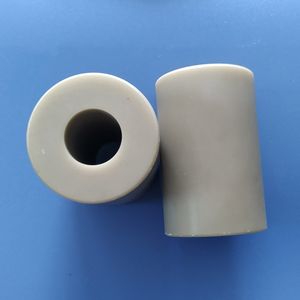Discover Premium Ceramic Products | Durability & Elegance United | Advanced Ceramics
PRODUCT PARAMETERS
Description
Overview of aluminum nitride ceramics
Aluminum Nitride Ceramic is an advanced ceramic material with aluminum nitride as the main component. It has been widely used in electronics, optics, and mechanics due to its unique properties.
Features of aluminum nitride ceramics
High thermal conductivity: Aluminum nitride ceramics have relatively high thermal conductivity, usually between 170-260 W/m·K, which makes it an excellent heat dissipation material. It is especially suitable for electronic devices that require efficient heat dissipation, such as substrate materials for power semiconductor devices.
Good electrical insulation: Despite its high thermal conductivity, aluminum nitride ceramics are excellent insulators of electricity, which can effectively prevent current leakage and ensure the safe operation of electronic components.
Low dielectric constant and dielectric loss: These characteristics make aluminum nitride ceramics very suitable for use in high-frequency circuits because it can reduce energy loss during signal transmission.
High temperature resistance: Aluminum nitride ceramics can maintain structural stability and strength at extremely high temperatures. Its melting point is about 2800°C, so it is suitable for applications in high temperature environments.
Low thermal expansion coefficient: Compared with semiconductor materials such as silicon, aluminum nitride has a lower thermal expansion coefficient, which means it has better dimensional stability when the temperature changes, which helps improve packaging reliability.
Corrosion resistance: Aluminum nitride ceramics have good chemical stability to most molten metals and are not easily oxidized or corroded, allowing them to perform well in harsh environments.
High mechanical strength: Although not as hard as some other types of ceramic materials, aluminum nitride ceramics still provide enough mechanical strength to allow them to be used in many structural applications.
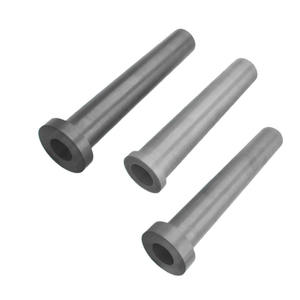
(Good Insulation Aluminium Nitride Copper-Coated Ceramic Sheet ALN Metallized Substrate)
Specifications of Good Insulation Aluminium Nitride Copper-Coated Ceramic Sheet ALN Metallized Substrate
The Great Insulation Aluminium Nitride Copper-Coated Porcelain Sheet ALN Metallized Substrate gives high-performance options for advanced electronics. This material combines aluminium nitride ceramic with a copper coating. It guarantees efficient heat transfer while maintaining electric insulation. The product suits applications requiring thermal management and dependability.
The ceramic base offers superb thermal conductivity. It reaches up to 170-180 W/m · K. This residential or commercial property enables rapid heat dissipation from high-power components. The sheet decreases overheating risks in gadgets like power components or LED systems. Electric insulation stays solid. The dielectric stand up to voltage surpasses 15 kV/mm. It prevents existing leak even under high voltage stress.
Mechanical sturdiness is an essential feature. The substratum withstands splitting under thermal biking. It deals with temperature levels from -50 ° C to 350 ° C without deterioration. The copper layer bonds safely to the ceramic surface area. This metallization process utilizes direct plating. It develops a smooth, uniform finish for dependable soldering. The copper density ranges from 10 to 300 microns. Individuals pick based on details circuit style needs.
The sheet supports accurate machining. It can be cut into custom shapes or drilled for element installing. Flatness remains within 0.05 mm per 100 mm length. Surface roughness measures below 0.4 μm. These characteristics make sure compatibility with automated assembly processes.
Applications consist of power electronic devices, RF parts, and laser diodes. The product works in aerospace, auto, and telecommunications sectors. It changes standard substrates like alumina or beryllia. Efficiency improvements consist of better warmth dissipation and lighter weight.
Manufacturing follows rigorous quality assurance. Each set goes through thermal, electrical, and mechanical testing. Accreditations fulfill worldwide criteria for industrial usage. The product ships in anti-static packaging to prevent damages. Custom dimensions and copper patterns are available. Lead times vary based upon order specs.
This substrate addresses contemporary design obstacles. It stabilizes thermal efficiency with electric safety and security. Users achieve longer tool lifespans and secure operation. The mix of aluminium nitride and copper satisfies needs for high-power miniaturized systems.
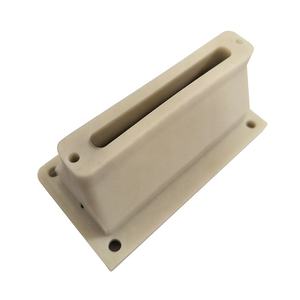
(Good Insulation Aluminium Nitride Copper-Coated Ceramic Sheet ALN Metallized Substrate)
Applications of Good Insulation Aluminium Nitride Copper-Coated Ceramic Sheet ALN Metallized Substrate
Excellent insulation aluminium nitride copper-coated ceramic sheets (ALN metallized substrates) are utilized in numerous industries. These sheets manage high warmth and electrical power well. They function best in situations needing strong thermal monitoring. The aluminium nitride core moves heat far from components quickly. This stops tools from obtaining as well warm. The copper layer on the top makes soldering easier. This layer bonds well with circuits. Electrical insulation remains solid also under stress and anxiety.
High-power electronics utilize these sheets usually. Power modules and inverters require products that handle heat. Aluminium nitride sheets keep temperatures secure. This boosts performance and life-span. LED illumination systems profit also. High-brightness LEDs create lots of warmth. These sheets spread out heat equally. This quits LEDs from failing early.
RF and microwave components utilize ALN substrates. Signals take a trip with little loss below. The stable framework maintains efficiency stable. Automotive electronic devices count on these sheets. Electric vehicles and charging systems encounter high temperatures. Aluminium nitride manages hard conditions. It guarantees security and reliability.
Aerospace and defense applications require resilient products. Devices in satellites or radar systems encounters extreme heat and resonance. These sheets withstand wear and thermal shock. Clinical gadgets use them for exact heating control. Imaging systems and sensors remain precise with steady thermal conditions.
Industrial lasers and power products use these sheets. Constant warmth control stops damages. Manufacturers pick ALN substrates for their convenience. They match small or complicated styles. The copper covering permits direct bonding. This reduces setting up steps and expenses.
Performance stays stable over time. Extreme chemicals and dampness do not deteriorate the product. Engineers trust these sheets for important tasks. They stabilize heat, insulation, and mechanical toughness. This makes them a sensible option for innovative technology needs.
Company Introduction
Advanced Ceramics founded on October 17, 2014, is a high-tech enterprise committed to the research and development, production, processing, sales and technical services of ceramic relative materials and products.. Since its establishment in 2014, the company has been committed to providing customers with the best products and services, and has become a leader in the industry through continuous technological innovation and strict quality management.
Our products includes but not limited to Silicon carbide ceramic products, Boron Carbide Ceramic Products, Boron Nitride Ceramic Products, Silicon Carbide Ceramic Products, Silicon Nitride Ceramic Products, Zirconium Dioxide Ceramic Products, Quartz Products, etc. Please feel free to contact us.(nanotrun@yahoo.com)

Payment Methods
T/T, Western Union, Paypal, Credit Card etc.
Shipment Methods
By air, by sea, by express, as customers request.

5 FAQs of Good Insulation Aluminium Nitride Copper-Coated Ceramic Sheet ALN Metallized Substrate
What is the primary use of Good Insulation Aluminium Nitride Copper-Coated Ceramic Sheets? These sheets are commonly used in electronics requiring efficient heat dissipation. They serve in power modules, LED lighting, and high-frequency devices. The material transfers heat away from sensitive components. This prevents overheating. It ensures device reliability.
Why choose aluminium nitride over other ceramic materials? Aluminium nitride offers superior thermal conductivity compared to alternatives like alumina. It performs well in high-power applications. The material also provides strong electrical insulation. This combination supports stable operation in demanding environments. It reduces the risk of short circuits.
How does the copper coating improve the ceramic sheet’s performance? The copper layer allows easy soldering to metal parts. It creates a reliable bond between the ceramic and other components. This enhances thermal transfer efficiency. The coating also resists oxidation. It ensures long-term durability under heat stress.
Can these sheets withstand extreme temperatures? Yes. Aluminium nitride maintains stability in temperatures up to 800°C. The copper coating adds resistance to thermal cycling. This makes the sheets suitable for applications with rapid temperature changes. They do not warp or crack under stress.
Are custom sizes or shapes available for specific projects? Manufacturers often provide customization. Dimensions, thickness, and copper layer patterns can be tailored. This flexibility meets unique design requirements. Custom options ensure compatibility with different electronic layouts. Clients can request samples for testing before bulk orders.
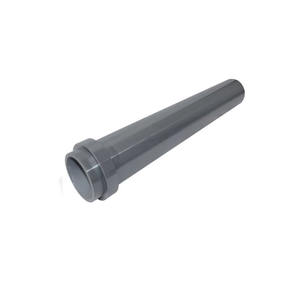
(Good Insulation Aluminium Nitride Copper-Coated Ceramic Sheet ALN Metallized Substrate)
REQUEST A QUOTE
RELATED PRODUCTS
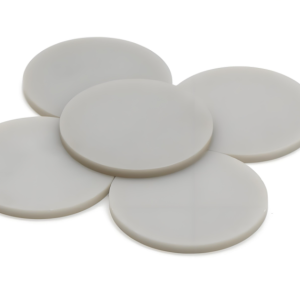
Manufacturing AIN Aluminum Nitride Ceramic Discs Aluminum Nitride Disk
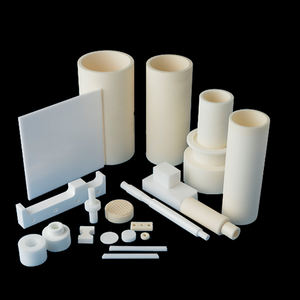
Double Sided Polished Aluminium Nitride Ceramic Plate ALN Sheet For LED
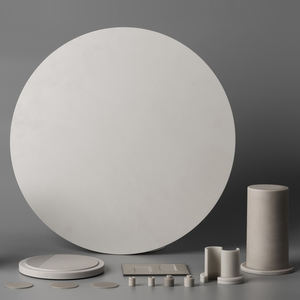
Big Size High Precision Aluminium Nitride Tube / ALN Ceramic for IGBT / MOS Tube
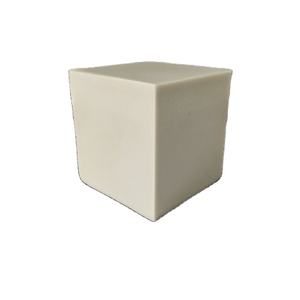
Custom Shape ALN Aluminum Nitride ALN Ceramic Seal Ring
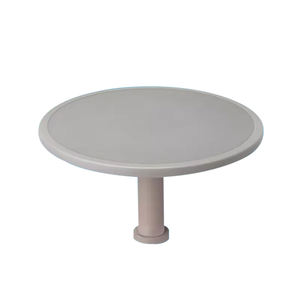
SINTYRON Semiconductor Ceramic Single Crystal 170 180w High Thermal Conductivity Aln Aluminum Nitride Ceramic Substrate


